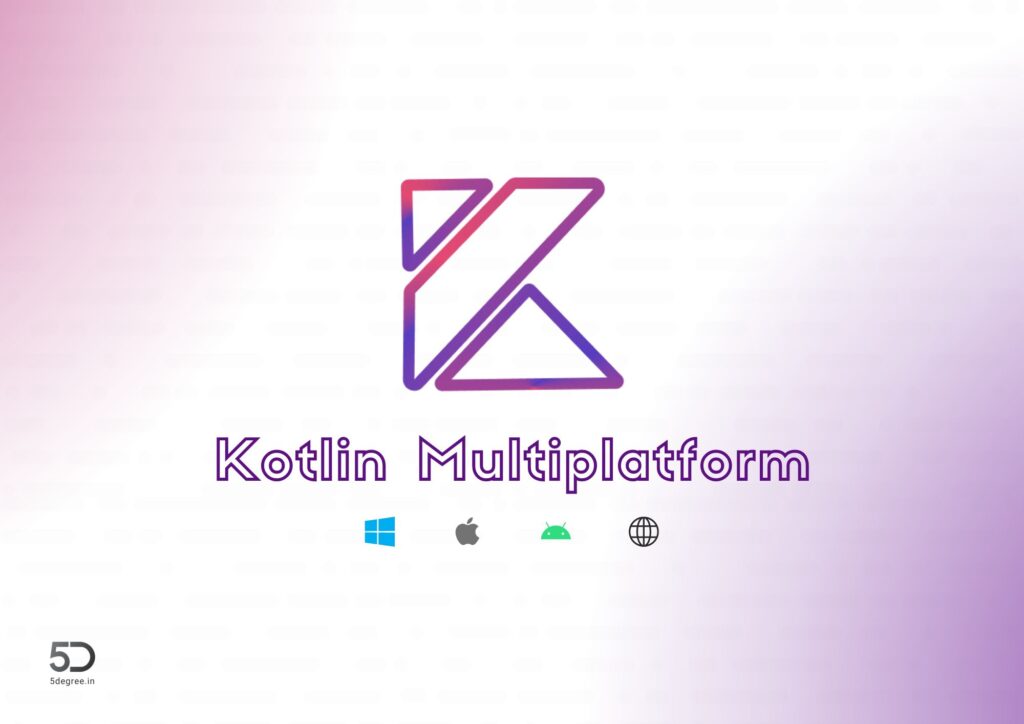So, you’ve been hearing the buzz about Kotlin Multiplatform (KMP), Kotlin Multiplatform Mobile (KMM), and you’re probably wondering, “Is this the next big thing in app development?” Or maybe you’re stuck between Flutter, Kotlin, and Swift and don’t know which direction to go. In this blog, we’ll dive into all of that. I’ll break down what Kotlin Multiplatform is, why it’s creating such a stir, and how it compares to popular frameworks like Flutter. We’ll also tackle whether KMP or KMM could be the answer to your cross-platform development needs.
What is Kotlin Multiplatform?
First off, let’s clear the air: Kotlin Multiplatform (KMP) is a technology that enables you to share code between different platforms like Android, iOS, web, and even desktop apps. It’s essentially a tool to write your business logic once, then deploy it across multiple platforms without having to rewrite everything. You might be thinking, “Cool, but how is that different from frameworks like Flutter?” We’ll get there.
The real magic behind KMP is that you’re still writing native code for each platform where it matters, like UI and system-level functionality. But all that shared logic—like networking, database, or algorithms—can be written in one place, using Kotlin. KMM is the mobile-specific version of KMP, focused on Android and iOS. The result? Less redundant code, a happier developer, and (hopefully) faster development cycles.
Is Kotlin Multiplatform Any Good?
The short answer is: Yes. But like everything in tech, it depends on what you’re trying to achieve. If you’re a mobile dev who already knows Kotlin, then KMP and KMM can be a total game-changer. The learning curve is gentle because Kotlin itself is a first-class citizen in Android development, thanks to Google’s endorsement.
For iOS devs, it’s a little trickier because you’ll still be dealing with Swift and Objective-C for native features, but you’ll benefit from shared code in the backend. So, yes, KMP is definitely worth looking into if you’re tired of rewriting logic for different platforms.
KMP vs. Flutter: Which is Better?
Now, let’s talk about Flutter. It’s the elephant in the room, and if you’re reading this, you’ve probably already done some research on Flutter too. The big difference? Flutter uses Dart to write a single codebase that runs on both Android and iOS, but unlike KMP, you’re writing the entire app in Dart, including the UI. If you’re curious about what’s been built using Flutter, here’s a handy list of top apps built with Flutter that’ll give you a broader context.
So, is KMP better than Flutter? Well, it depends on your use case. If you want pixel-perfect UI on both Android and iOS, Flutter can be an awesome choice. But if you want to keep the native experience and just share core business logic, Kotlin Multiplatform has the upper hand. The flexibility of keeping native UI code separate can sometimes be a lifesaver, especially when you need to cater to platform-specific needs.
Does Google Use Kotlin or Flutter?
Good question! Google supports both. They officially adopted Kotlin as a first-class language for Android development back in 2017. But they also back Flutter, which they use internally for products like Google Ads. So, the truth is, Google isn’t picking sides. They’re offering tools for both native and cross-platform devs, and it really comes down to your specific project requirements.
Is KMP Replacing Flutter?
No, and honestly, it probably won’t. The two serve different purposes. KMP is more about sharing logic and keeping platform-native features intact. Flutter, on the other hand, is all about unifying everything into one codebase—including the UI. So, while KMP might be ideal for teams that want flexibility and prefer native performance, Flutter could be better suited for those who want fast prototyping and identical UIs across platforms.
Performance: Kotlin vs. Flutter—Which is Faster?
When it comes to raw speed, the answer can be subjective based on what part of the app we’re talking about. Kotlin Multiplatform wins if you’re focusing on keeping the native performance intact since your UI and system calls are still being handled by Android’s and iOS’s native code. On the other hand, Flutter has optimized its Dart engine so well that for many applications, you might not notice a significant difference in performance.
That said, Flutter does introduce some overhead because it needs to manage its rendering engine, so for super performance-critical apps (like gaming), Kotlin might give you a bit more control.
Should You Learn Kotlin or Flutter First?
Now, if you’re just diving into mobile development, which should you learn first: Kotlin or Flutter? It depends. If you’re thinking long-term and you’re more interested in building for Android specifically, Kotlin is a great first language. It’s also versatile because Kotlin isn’t just for mobile development—you can use it for server-side development, Android apps, and, of course, cross-platform apps with KMP.
On the flip side, if your goal is to get up and running with cross-platform apps as fast as possible, Flutter might be the quicker path to success, especially if you don’t want to deal with native UI development on both platforms.
Should You Learn Swift and Kotlin or Just Flutter?
If your goal is to become proficient in both Android and iOS, learning Kotlin and Swift might be the better choice. You’ll gain in-depth knowledge of how native apps work on both platforms. But if you’re strapped for time or prefer a “one-size-fits-all” approach, Flutter can simplify your life by letting you build both apps with one codebase.
At the end of the day, it’s all about what you want. If you’re passionate about mobile development and want to specialize, learning both Swift and Kotlin could make you highly employable. If you’re more about getting things done quickly and moving on, Flutter has plenty of appeal.
Is Kotlin Multiplatform Different from Kotlin?
Technically, Kotlin Multiplatform uses the same programming language—Kotlin—but the context is different. In KMP, you’re focusing more on how you can write code once and share it across platforms, while in regular Kotlin development (like Android dev), you’re writing code specifically for one platform. The syntax is the same, but the architecture and project goals are where the differences really show up.
Conclusion
So, is Kotlin Multiplatform the future? It’s looking pretty promising for developers who want to share logic across platforms without sacrificing native performance. For mobile developers familiar with Kotlin, it’s a smooth transition into KMP or KMM. However, if you’re looking for a fully unified codebase that also covers the UI, Flutter might be more your style. Both are fast, versatile, and heavily supported—by Google and a growing community.
In the end, whether you should go with Kotlin, Flutter, or a mix of both depends on your project’s needs and your long-term goals as a developer. Either way, you’re diving into some pretty exciting territory! At last, if wanna know more about this tech, checkout sample apps built using KMP.


